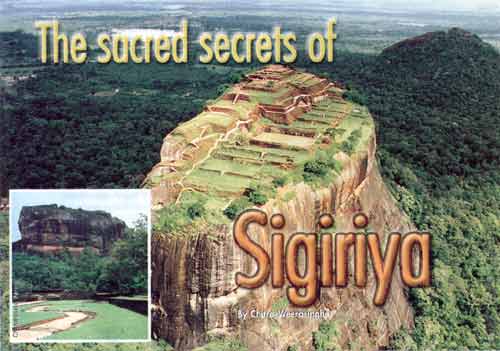
Sigiriya
Sigiriya (Lion's rock), is an ancient rock fortress and palace ruin
situated in the central Matale District of Sri Lanka, surrounded by the
remains of an extensive network of gardens, reservoirs, and other
structures. A popular tourist destination, Sigiriya is also renowned for
its ancient paintings which are reminiscent of the Ajanta
Caves of India. It is one of the seven World Heritage Sites of Sri
Lanka.
Sigiriya may have been inhabited through prehistoric times. It was used
as a rock-shelter mountain monastery from about the 5th century BC, with
caves prepared and donated by devotees to the Buddhist Sangha.
According to the chronicles as Mahavamsa the entire complex was built
by King Kashyapa (AD 477 – 495), and after the king's death, it was used
as a Buddhist monastery until 14th century.
The Sigiri inscriptions were deciphered by the archaeologist Senarath
Paranavithana in his reno
wned two-volume work, published by
Cambridge, Sigiri Graffiti and also Story of Sigiriya.
 Location and geographical features
Location and geographical features
Sigiriya is located in Matale District in the Central Province of Sri Lanka. It is within the cultural triangle, which includes five of the seven world heritage sites in Sri Lanka.
The Sigiriya rock is a hardened magma plug from an extinct and long-eroded volcano. It stands high above the surrounding plain, visible for miles in all directions. The rock rests on a steep mound that rises abruptly from the flat plain surrounding it. The rock itself rises 370 m (1,214 ft) above sea level and is sheer on all sides, in many places overhanging the base. It is elliptical in plan and has a flat top that slopes gradually along the long axis of the ellipse.
 Location and geographical features
Location and geographical featuresSigiriya is located in Matale District in the Central Province of Sri Lanka. It is within the cultural triangle, which includes five of the seven world heritage sites in Sri Lanka.
The Sigiriya rock is a hardened magma plug from an extinct and long-eroded volcano. It stands high above the surrounding plain, visible for miles in all directions. The rock rests on a steep mound that rises abruptly from the flat plain surrounding it. The rock itself rises 370 m (1,214 ft) above sea level and is sheer on all sides, in many places overhanging the base. It is elliptical in plan and has a flat top that slopes gradually along the long axis of the ellipse.
No comments:
Post a Comment